6 Eyebrow-Arching Easter Eggs In Popular TV Shows
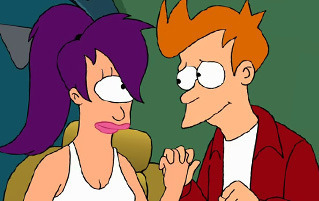
We love Easter eggs because they reward dedicated, sharp-eyed viewers with cool stuff like stealthy, series-spanning jokes or a deeper understanding of their favorite movies and TV shows (to say nothing of the money-saving obliteration of their social lives). And these days, if you want to get the most of the show, you have to hunt for that hidden shit. That's where writers are hiding some of the most important stuff. For example ...
Arrested Development Hints That Tobias Is a Light-Skinned Black Guy

At this point, Arrested Development should probably just go ahead and rename itself to "Subtle In-Joke" or "White People: A Loving Parody." After all, the show's main characters are all Caucasian suburbanites, including the whitest white guy in sitcom history, Tobias Funke -- a neurotic, sweater-wearing punchline with a wife way too hot for him. Then again, the "Subtle In-Joke" title might actually be a better fit seeing as there's a buttload of clues scattered throughout Arrested Development suggesting that David Cross's character was secretly African-American. This isn't some random fan theory: One of the members of the cast confirmed it -- the writers just never got the chance to do the whole storyline (in which it would be revealed Tobias just has a skin disorder that makes him lighter than you'd expect).
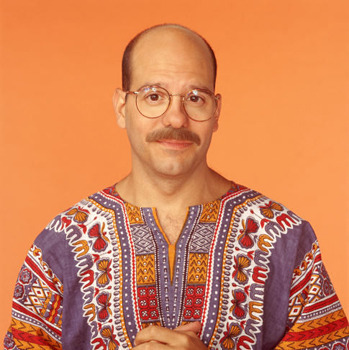
You hear that Tumblr? That means his dashiki is not "cultural appropriation."
Knowing that, you can find plenty of little allusions to the fact here and there: The first clue is Tobias' middle name, "Onyango," which is Kenyan, and which was also the name of Barack Obama's grandfather. Then there's Tobias' book The Man Inside Me. Other than being another joke at the expense of Tobias' ambiguous sexuality, the cover of the book happens to depict him as being two people: white on the outside, and dark on the inside, like a reverse Oreo.
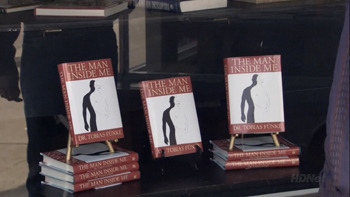
Or a Sno Ball. Shit, somebody is probably already using that as a racial slur.
Then there's the time Tobias' mother-in-law referred to him as "a colored man" (after he painted himself blue in order to join the Blue Man Group). Another time, after his wife commented that the name "Tobias" normally conjures up images of a "big black guy," her husband responded: "Well, obviously I'm not a big guy." On one hand, you'd assume they just never got around to dealing with that storyline due to the show getting canceled so quickly, but it's more likely they just thought it'd be funnier to just never explain it.
An Online Synopsis Spoils a
At the end of the Game of Thrones season 4 episode "Oathkeeper," an undead White Walker carries off a human child and brings it to its boss, who touches the baby's cheek and transforms it into a snow zombie.
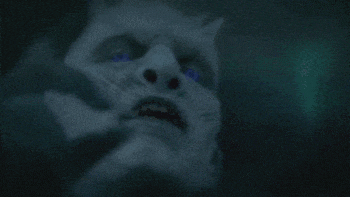
Pictured: a horny old guy turning a child.
That scene actually caused quite a bit of stir in the Game of Th-sorry, A Song of Ice and Fire fandom, because it doesn't appear anywhere in the books. Of course many things in the show aren't found in the books, like Podrick's magical cock, but this scene is different as it answers a lot of important questions about the White Walkers. For example, it tells us that the creatures used to be humans. But where this gets into spoiler territory involves what was probably a simple screw-up on the part of some HBO employee.
Some Reddit users caught an HBO synopsis (that was later deleted) that identified the horned White Walker as "the Night's King." Even if you haven't read the books, you may still know who that is if you've watch the season 2 DVD extra titled "The Night's Watch History." The extra tells of a legend about the 13th commander of the Night's Watch, the guys tasked with killing White Walkers, who failed spectacularly at his job by falling in love with a female Walker, losing his soul in the process, going crazy, and declaring himself ... "Night's King." That's right, the boss of the White Walkers used to be a "crow," which technically makes him Jon Snow's "brother."
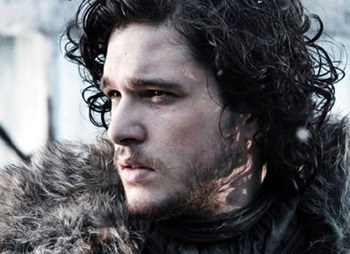
*Cue soap opera music*
But wait, if the scene isn't in the books, how do we know that it will be? What, can the producers of the show see into the future? In a way, yes, because George R.R. Martin has told them how the series will end, in case he dies before being able to complete it (you know, like if he gets in a jet ski accident after a wild cocaine orgy). This effectively makes the synopsis a spoiler that you can use to punish those book fans who tried to ruin your masturbation by pointing out that, in the novels, Drogo knocked Daenerys up when she was only 13.

The basic plot of Futurama centers around a lovable idiot named Fry accidentally stumbling into a cryogenic tube and waking up in the year 3000 A.D. where he gets a job, goes on adventures, and makes adults cry over a goddamned cartoon. However, during the episode "The Why of Fry," it's revealed that Fry's "accident" was actually engineered by Nibbler, the series' pet mascot who turns out to be a powerful alien overlord.
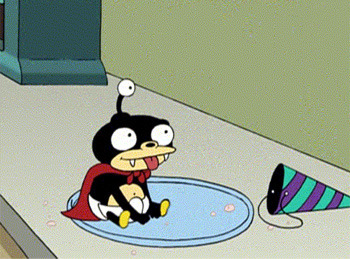
*Awe-verlord.
In fiction, this sort of thing is called a "retcon" ( "retroactive continuity") and it's what happens when writers get drunk, miss deadlines, and make up a bullshit story on the spot that alters established facts within their fictional universe. That's obviously what happened with Futurama. We mean, if you rewatch the pilot episode, it's clear that Nibbler wasn't anywhere near Fry during his fall into the freezer.
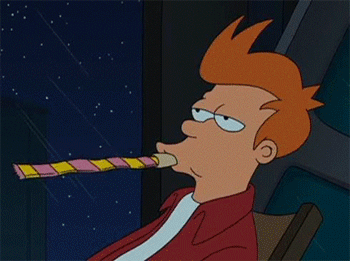
That had to be a hell of a party horn to have that kind of recoil.
Hold on, FREEZE FRAME! What was that?!
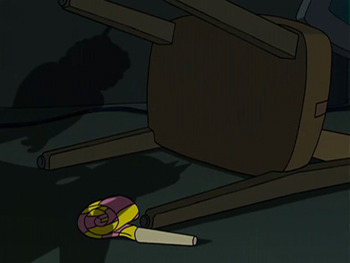
AN OWL! IT ALL FITS!
Well, don't we look stupid right now because that is clearly Nibbler's shadow (notice the characteristic eyestalk), putting him and Fry together more than four years before the events of "The Why of Fry." And, no, that's not something they added in later for the DVD release. According to the Futurama staff, they always meant for Nibbler to be the key to the truth behind Fry ... and also Leela, Fry's one-eyed, "alien" love interest who in season 4 is revealed to actually be a human mutant.
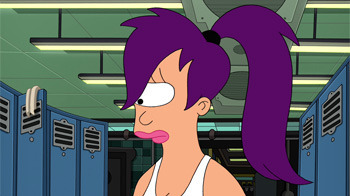
Bullshit. Where's her ninja weapon and headband?
In the season 2 opener, Bender flushes Nibbler down the toilet, and the Planet Express crew goes looking for him in the sewers where we are introduced to the mutants, a race of deformed folks who are banished from the surface world because, shit, look at them:
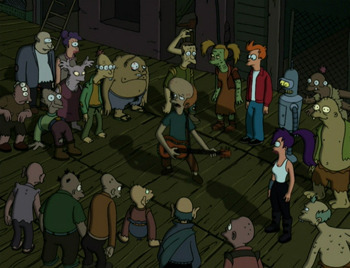
Although the dude playing the guitar looks suspiciously like the dude that was always playing guitar at parties.
But now look at the people in the top left corner.
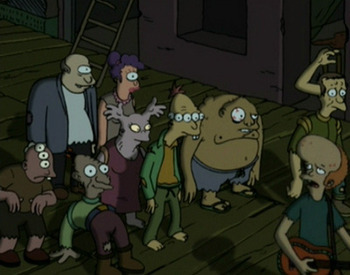
Is that eyeball dude in the middle a mutant, or a highly evolved descendant of Professor Frink?
Two cyclopses, just like Leela, and that's because, as the show's creators explain, the two mutants are Leela's parents, making a sneaky cameo almost three years before the show officially revealed that if you are attracted to Leela, you might have a disability fetish.
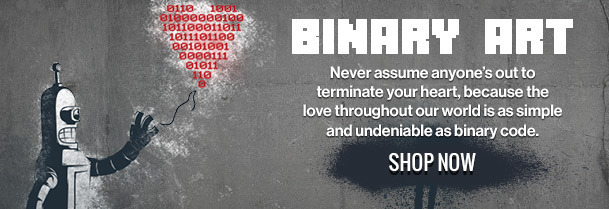
A Tiny Sign Proves That the Friends Crew Were a Bunch of Selfish Pricks

Friends was a simple but wildly successful series about a group of likeable 20/30-somethings dealing with love, employment, and life. Well, maybe not exactly "employment" because, by our rough estimate, the cast spent 99 percent of their fictional days at the Central Perk coffee shop -- sitting around a big table and the now-iconic couch and armchairs -- without ever losing their jobs.
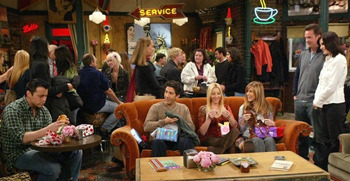
For our younger readers: "Jobs" are things that people in the '90s used to have.
But now that we mention it, those were some really awesome seats. How did the gang always manage to score that tasty piece of cafe real-estate? Because, as Tanya Ghahremani from Bustle first pointed out, they had the seats on permanent reserve as if they were Clapton at the Hard Rock. In many episodes, you can just about make out the teeny-weeny "Reserved" sign sitting on the table.
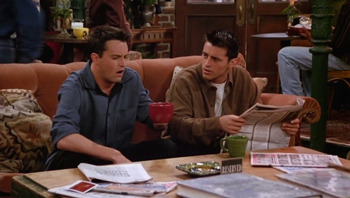
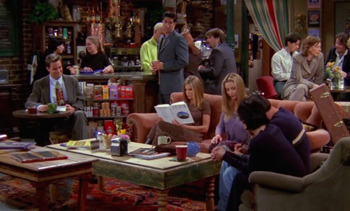
They had to keep it inconspicuous to not anger the commoners.
Before you ask, no, it isn't likely that the gang called ahead each time to book their seats. Most of the Friends characters live near the cafe, which is why their get-togethers are usually spontaneous affairs. That would not be possible without staking a claim to their own Central Perk parcel because it's not like there haven't been any takers for the couch spot. In all the photos above, the cafe is packed to the brim ... presumably with people wanting to fatally scald the Friends gang with their own coffees, because of this:
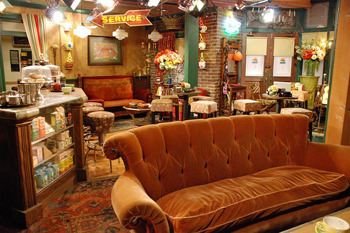
Fun fact: That couch is bigger than the apartment a chef and waitress in Manhattan could actually afford.
That couch is huge. Those people aren't occupying some dingy corner table but rather half the goddamned place that they want permanently roped off from the plebs. At least no one can say anymore that the show wasn't an accurate depiction of life in New York.
Two Seconds of Footage Hint That Firefly's Inara Was Terminally Ill

Fans of Firefly might not need to be told who Inara Serra is (but they desperately need to be told to move on, for Christ's sake.) For everyone else, though, here's a crash course in the character: Imagine if Princess Leia became a prostitute.
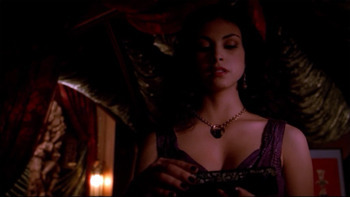
"So, my Tuesday wank fantasy, then?"
Well, that's pretty much Inara: a sophisticated, ass-kicking woman of grace, who happens to have sex with strangers for money. She's also tooootally in love with Han Solo (renamed to "Malcolm Reynolds" in Firefly) even if she herself refused to admit it ... maybe because she was tooootally dying.
That revelation was actually foreshadowed on the show, though for only two seconds. In the first episode of the series, the Firefly crew runs into Reavers, a group of space cannibal-rapists. As their ship approaches, Inara, fearing that they'll be boarded and killed, goes to her quarters and looks at a mysterious box ...
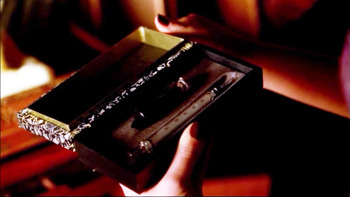
WHAT'S IN THE BO- ... oh, it's a syringe.
We're kind of led to believe that this is a suicide kit due to the fact that Reavers tend to fuck their victims to death. But according to Morena Baccarin (the actress playing Inara), the truth is that the box contained Inara's medicine. Why would she need medicine? Because Inara was dying from a terminal illness that she kept at bay with the daily space insulin injections. So in that scene, she was actually thinking about skipping the shot in order to die with some dignity.
This presumably would have been explored later on but, as you know, Firefly was canceled, which might have been for the best. We can't exactly envision a non-horrific conclusion to Inara's illness arc from a deranged director who once planned to have her brutally gang-raped.
Four Episode Titles Give Away the Ending of Breaking Bad's Second Season

During the season 2 finale of Breaking Bad, two airplanes collided over Albuquerque to the ecstatic delight of the show's fans. See, up until that point, everyone thought that the season will conclude with Walter White's meth lab exploding, which would have been good for society but bad for the show (especially if it meant Walter had to go back to teaching high school chemistry). That's what the show seemed to be hinting at, what with four episodes starting off with flash-forwards showing billowing black smoke and people in hazmat suits around the White home.
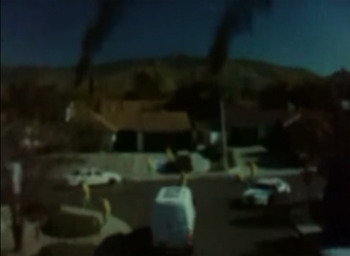
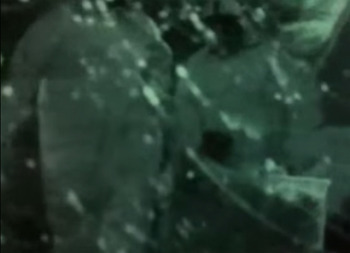
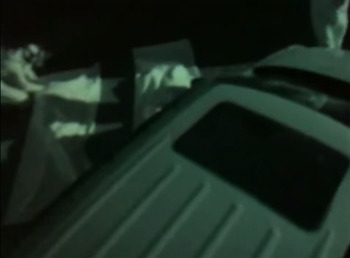
Are we sure this isn't just some misplaced b-roll from E.T.?
Some, in fact, would speculate that the plane crash bit was just a cheap cop-out the writers came up with at the last moment, when they decided it would be too hard to write their way out of a middle-aged cancer victim getting engulfed in a chemical explosion's fireball. But not if you paid attention to the titles of the flash-forward episodes ... and did a little code-breaking.
First, you have the episode "Seven Thirty-Seven," which in context was how many thousands of dollars Walter claimed he needed in order to provide for his family after he was gone. The next episode is called "Down," which references the characters' struggles, like Walter's deteriorating marriage and Jesse's homelessness. Then, we have the episode "Over" when things start to slightly look up for Walter. Finally, there's the episode "ABQ," but we weren't able to crack the meaning of that title.
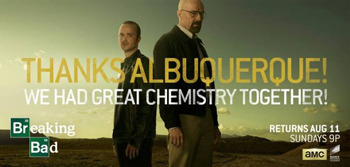
Maybe we'll never know.
So the titles make sense in the context of their episodes, but put them together and you get:
Seven Thirty-Seven Down Over ABQ
If you're still not seeing it, the number is a reference to a Boeing 737, one of the two airliners that crash over Albuquerque. (ABQ! We just got it!) So the second season finale of Breaking Bad was actually telegraphed quite obviously through four episode titles, just as you would expect from a brilliant show that cleverly foreshadowed its series finale with one fucking song.
Ed and Aaron would like to thank Amanda Mannen for the Friends entry.
For more amazing easter eggs, check out 7 Insane Easter Eggs Hidden in Movies and TV Shows and 6 Insane Easter Eggs Buried in Famous TV Shows.
Are you on reddit? Check it: We are too! Click on over to our best of Cracked subreddit.